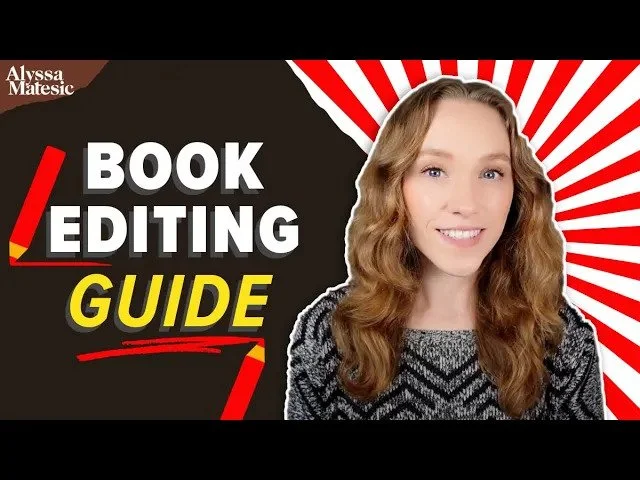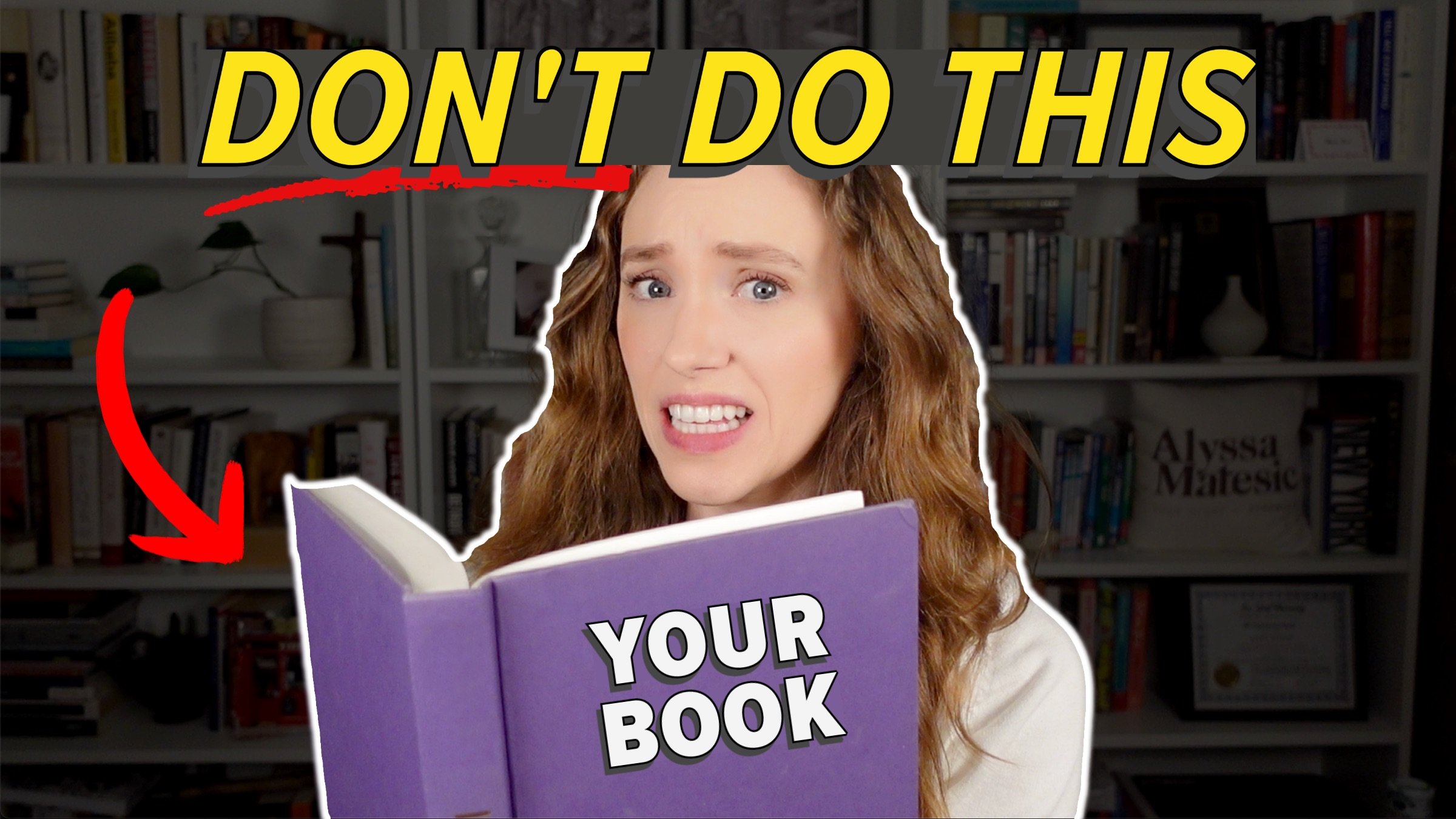The Types of Book Editing Every Novel Needs
HIT PLAY OR READ THE POST BELOW:
A comprehensive edit of your book likely requires more rounds of revisions than you initially thought it would. But as a professional book editor, I genuinely do not want you to fear the red pen. Embarking on the book editing process does take a lot of stamina, but I promise you, at the end of it, you're going to have a much stronger story than you ever thought possible.
I'm going to give you an overview of all the different types of book editing, broken down into two key phases. My goal is to help you understand what to expect going into the book editing process and help you understand all of the industry terminology so you can hit the ground running with revisions and help your story reach its maximum potential.
Phase 1: Structural or Substantive Editing
This is the first stage of editing a book, and it focuses on all the big-picture elements of your story — all the foundational building blocks that make your story what it is, rather than line-level issues like grammar and spelling.
As I go through all the phases and types of book editing, I want you to picture it like a funnel graphic. We're going to start at the top and work our way down. So, substantive or structural editing falls in the top section.
Some areas that this phase of editing will focus on include:
Pacing
Plot holes
Character development
Structure
POV
Themes
Resolution
Length
This is the type of editing that I personally specialize in, and it is the type of editing that most literary agents and acquiring editors at publishing houses also specialize in.
You may find yourself going through multiple rounds of editing within this structural editing phase, either on your own, with critique partners or with a professional editor, to address all the big-picture issues in your story. The goal with this type of editing is to make sure all the foundational elements of the story are strong.
Now I want to talk about the two primary forms of structural or substantive editing.
Editorial Assessment
The first is an editorial assessment, which can also be referred to as a manuscript evaluation or manuscript critique, even an editorial letter. This is a detailed document going through all the foundational elements of your story and evaluating them for opportunities of improvement.
This is typically the first type of edit a manuscript will go through. We're still operating at the very top of that funnel here, since at this phase so much of the manuscript text itself could still change. We don't want to jump the gun and dive into specific scenes before we know that that scene is even going to belong in the draft, right? We're talking big picture things here, like:
Are all the appropriate POVs included?
Does the plot make sense and hold up?
Are the main characters going through a compelling transformative arc?
Do we need to add characters or omit characters?
Do we need to change the ending?
Do we need to trim 30,000 words off or add 30,000 words?
These are just some of the big-picture elements we are dealing with at the editorial assessment phase.
Once you have finished a draft and you have gone through as much self-editing as you can and you really need an external set of eyes on the book, that's when I recommend getting an editorial assessment. It will give you a comprehensive understanding of all the foundational aspects of your story, as well as which ones you could improve to fully realize your vision for the story. A strong editorial assessment is also going to provide specific revision suggestions to give you a roadmap for where to take the story.
Developmental Editing
Once the editorial assessment is complete, the next level of editing would be developmental editing. This involves inline comments in the manuscript itself, typically via a software like Word's Track Changes. Here, the editor is flagging specific lines of text in the story, making comments about the placement of different scenes, the order of scenes, the length of scenes, how a character is being portrayed, the effectiveness of a dialogue exchange, etc. They might suggest moving scenes around, condensing some scenes, or expanding some scenes.
The goal of the developmental edit is to improve the overall flow of the story and ensure that every single scene in the story is there for a reason and earns its place on the page. If there are scenes that aren’t there but need to be, we need to add them. If there are scenes there that shouldn't be, we need to take them out. I recommend diving into developmental editing after you've had an editorial assessment, because ideally, the larger issues will have been dealt with at the editorial assessment phase so you and your editor can dive into specific scene-level issues in the developmental edit.
Phase 2: Sentence-Level Editing
Now let's get into phase two of the editing process, which involves different types of book editing on the sentence level. Once all the overarching story elements are in place due to the work you've done through the editorial assessment and the developmental edit, now you can move on to the three next stages of book editing that I bucket under sentence-level editing. Here, we are more concerned with the text itself.
Line Editing
While structural/developmental editing focuses on achieving your vision for the story, delivering an effective reader experience, and making your story reach its full potential, line editing helps you improve the prose itself. This is the type of editing that many authors think of when they think they're getting their book edited, but remember that you don't want to dive into sentence-level editing prematurely and skip over all the structural and developmental-level work, because if you do, you might be working on refining and revising sentences that might not even make it into the final draft. I am all about editing efficiently, which is why I like to follow the funnel visual. So, the next level in our funnel after editorial assessment and developmental edit is a line edit.
Line editing aims to polish the prose on a sentence and paragraph level. During a line edit, you'll focus on:
Word choice
Sentence structure
Clarity
Continuity issues
Dialogue issues
Tone consistency
During the line edit, you might fix some grammatical issues or spelling issues as you go, but that's not the focus of this type of edit. You want to make sure your prose sings, each and every sentence packs a punch, and every word matters. If you are working with an editor, rest assured that they are going to be working to retain your unique voice even as they are making line-level suggestions.
Copy Editing
The next type of book editing is copy editing. In a copy edit, you are going to dive deep into grammar, syntax, spelling, and formatting to ensure correctness and enhancing the clarity and readability of the story. While line editing is focusing more on the content and the style of your sentences, copy editing is more about the technical correctness. This is an opportunity to really tighten up your writing at the sentence level.
I typically recommend working with a different copy editor than your developmental editor, even potentially your line editor, because a copy edit is a very specific type of edit and requires someone who is trained in grammar. Plus, it can help to get totally fresh eyes on the manuscript at this point because you or your other editors might be too close to it to see those more detailed issues. Your copy editor will typically provide a stylesheet that includes your book's house style for all your formatting requirements.
Proofreading
Lastly, at the very tip of the funnel is proofreading. This is a final meticulous check for any spelling or grammar issues. By the time you get to a proofread, the manuscript should be quite polished already. It's really a final quality control check to dot your i's and cross your t's. I also recommend working with a wholly new editor for the final proofread, so you get fresh eyes on the manuscript at this point to catch any of those things that might have passed by the other editors who have already been through it.
Your Book Editing Roadmap
The book editing process will vary somewhat depending on every book's needs, as well as depending on your publication goals. If you're self-publishing, it will be important to go through all of the editorial phases that I just laid out if you want to put out a polished product. If you are querying literary agents, I recommend going through the substantive or structural editing phase at a minimum to make sure the manuscript is as strong as possible to present to literary agents. But you will go through all of these editing phases with the publisher who eventually makes you a book deal.
To reiterate, the typical stages of editing a book are as follows:
Editorial assessment
Developmental editing
Line editing
Copy editing
Proofreading
In general, you start with the big-picture edits and work your way down to the sentence-level and then word-level corrections. This process is not necessarily perfectly linear, however. You could go through multiple rounds of developmental editing before you drill down into sentence-level editing, or undergo multiple rounds of line editing, for instance.
I know it sounds like a lot, and it is. Writing a book is not for the faint of heart, and neither is revising one. But I promise you that each of these different types of book editing is crucial to making your book as strong as it can possibly be.
Other Types of Book Editing
Now, I want to briefly go through a few other types of book editing or reviews you might get on your manuscript through the book publishing process.
AUTHENTICITY OR Sensitivity Reading
The first is authenticity or sensitivity reading. This type of read ensures that any cultural, social, or identity-related representation in your book is accurate, respectful, and free from any harmful stereotypes. If your book deals with themes or representations that require a cultural awareness that is outside of your own lived experience, then it can be beneficial to work with an authenticity or sensitivity reader who has that experience and that understanding. Typically, you would integrate this either just before or just after the line editing phase, though it really is never too early to get an authenticity or sensitivity read if you determine that you need one or would like one for your book.
Fact Checking
This verifies the factual information portrayed in the book — dates, historical events, etc. — and is especially critical for non-fiction, but it could be used for fiction that incorporates historical elements as well, such as if your protagonist is a marine biologist in the '60s, and you want to make sure that the science is portrayed accurately. This would typically occur with the line edit.
Beta Reading
This is not a formal edit, but a beta read is a way to check your work against specific readers who are your target audience. Typically, you would give it to someone who you would like to be a reader for your book, and they will give you a gut check on if it aligns with the genre as they expected it to, what they liked about it, and what they didn't like. The point is to get these broad strokes impressions and see how the story is resonating with potential readers. A beta read could happen at any point in the editing process but typically happens at the substantive, structural level editing phases.
I hope this helped you better understand the book editing process, what it all entails, and why each and every phase of editing is critical to your book's success.
Thanks so much for reading, and happy writing!






